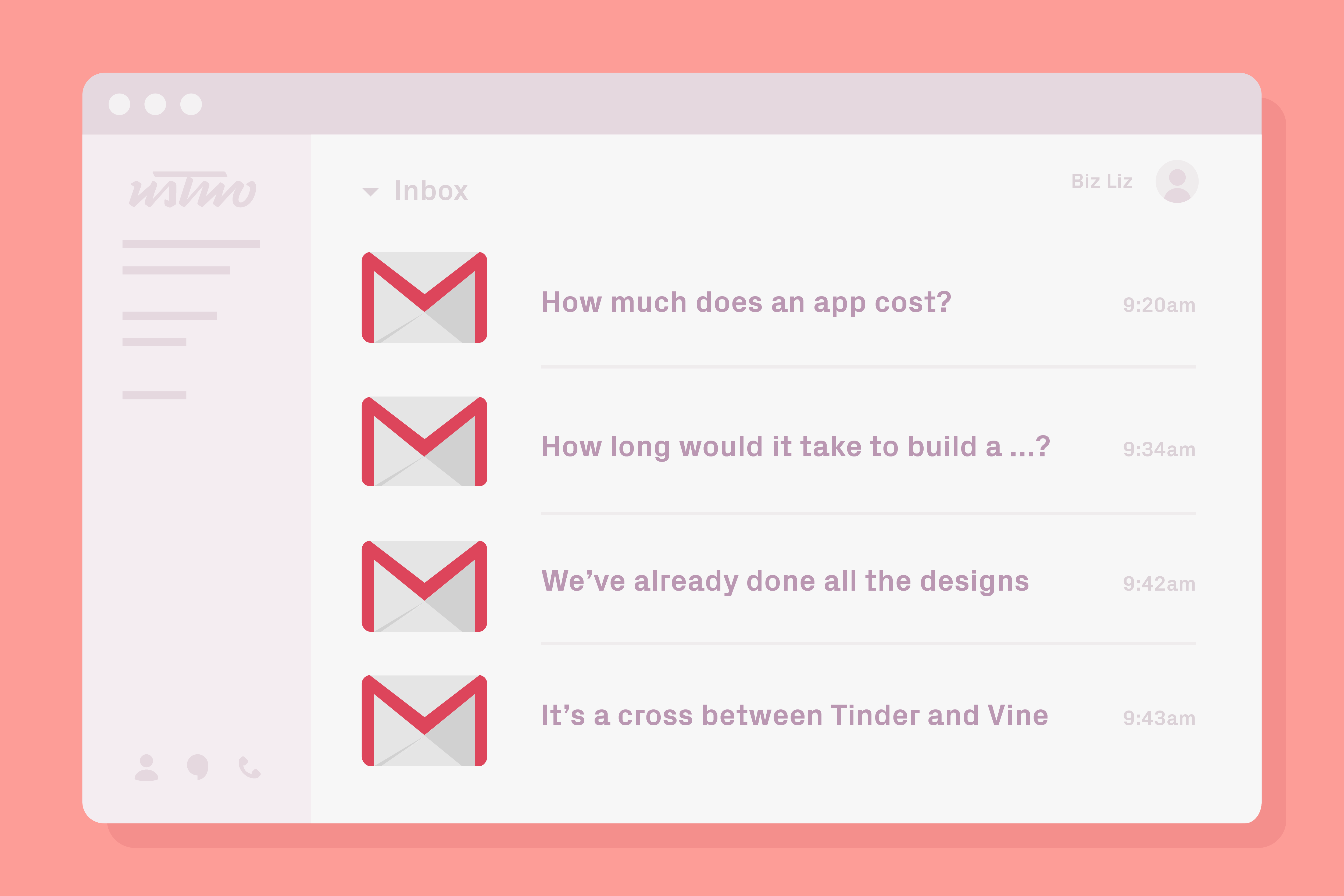Liz shares some of the common questions she's asked in Business Development at ustwo London.
“Can you give me a rough ball park cost and timings?”
It's the question on everyone's mind, but actually the most difficult to answer. This is especially true of product innovation projects, where we often don’t have insight into all the challenges or opportunities – at that stage we wouldn't want to presume to know what the solution will be.
That said, when you're estimating, cost is determined by three interlinked factors. The scope of the work to be done, the time it will take to make what you need and, most importantly, your budget. We need to have detailed discussions to understand these variables before we can give you an accurate cost and approach that will suit your project and business.
In most cases, one or more of these factors are fixed. If your budget is fixed, then it might be easier to start the discussion with ‘‘This is my ideal budget, what can I get for it?” as that will help us shape a plan where we can let you know how much time that will translate into and what scope can be achieved.
“How much will it cost to make me an app like Uber?”
These days everyone wants to get rich quick and be the next Uber or Tinder. It’s the modern-day success story and when you look at an ‘app’, it appears to be a simple thing. You just need to have that killer idea, get it built and then the million-dollar deal will follow, right? If only.
Firstly, you need to stop thinking about it as an app and think about the whole product. A product needs a business model – how will it make money, and what is its value proposition?
It needs to be promoted to help users find it. It needs a backend server and customer service support for when things go wrong. And the cost of building an app doesn’t end once it’s released. It’s a long-term investment that requires time, commitment and constant iteration to find that magic formula – aka product market fit.
Let’s look at Uber as an example. Firstly, they weren’t strangers to the startup tech scene. One of the founders had already sold StumbleUpon to eBay so had a fair amount of seed capital to play with, and lots of friends in the tech scene. They had built some early prototypes and tested their idea with 3 cars in New York to validate their idea of an on-demand taxi service. Let’s take a guess and say they spent $250K of their own money on developing the business idea to this point.
They then raised $1.3m in seed funding from a small group of investors to launch the service in San Francisco. Let's assume they used this money to create the apps for iOS and Android, basic marketing, driver recruitment, customer service support and creating a back-end system to keep the whole system working 'like magic’.
A year later they raised $11m in Series A funding which they used to scale the service further to other cities. They’ve since gone on to raise a further $4.9 billion in funding. So the answer to the original question ‘How much will it cost to make an app like Uber’ is … a lot more than you think. 
“Can you build us a new product on iOS, Android and mobile web at the same time?”
Yes, of course we can. But do you really need it on all platforms to start with? While there will be some economies of scale in the design of a product, each platform has its quirks and needs a different development team.
And once you’ve released the products, you’ll need to fix bugs and make improvements across each platform. All of which makes a multi-platform approach very expensive and potentially wasteful.
We would always recommend that you start with one platform, test and learn on that and then grow to new platforms.
Which platform you start with depends on your market, the users, the functionality and distribution that you need to leverage. A mobile web or hybrid app could be a good first option to validate a market demand, your proposition and pricing. They are easier to develop, easier to support and can reach the widest range of devices.
But they lack access to the native features of a phone and gestural controls that users have come to expect. Native apps are more expensive to design and develop but provide the best overall user experience in terms of performance, functionality and look and feel.
If you’ve validated your idea and are looking to launch a premium product then native is the way to go. The next question is, do you go with iOS or Android? That depends on your potential user base. Most new products are aimed at early adopters and our experience tells us that iOS is the best platform to reach this type of user.
“Can you make us a game/website/app to support a marketing campaign?”
Short answer, no. It’s not that we don’t like marketing, it’s just that it’s not what we do.
Campaigns are designed to drive engagement or awareness with a brand, and an app or website as part of that mix is a communication channel that in most cases won’t have any long-term business value. There will be a fixed budget, a tight timeframe (we’ve all been there) and a concept that’s driven by an engagement mechanic or data collection.
There are lots of studios who will happily build this type of app for you, but our focus is on creating products and services for the long-term that will make a genuine useful impact on user’s lives and build real business value.
“We’ve done all of the designs, can you just do the development?”
Doing all the design up front assumes that you know what the right design is and you just need to build it. This is a dangerous assumption to make and not an approach that we take, or recommend.
Our design process is a joint collaboration between design, tech, user and the business to ensure that all factors are aligned. While we do take on design-only projects and work with other developers as part of a collaborative team, we don’t provide development-only services if we’ve not had any involvement in the design.
“Would you consider a joint venture or revenue share?”
Now this is something we are interested in. But let’s get real. We’re not going to fund your ‘killer app idea’ or the next Instagram that you’ve dreamed up.
We are interested in solving real business problems, disrupting existing markets and working with founders who have experience and credibility.
That doesn’t mean we’re going to fund the entire thing, but we are open to other ways of getting paid for the value that we create.
Revenue share or outcome-based models of engagement are extremely interesting to us as long as the risk/reward balance is right. We’re always open to discussing serious proposals along these lines.